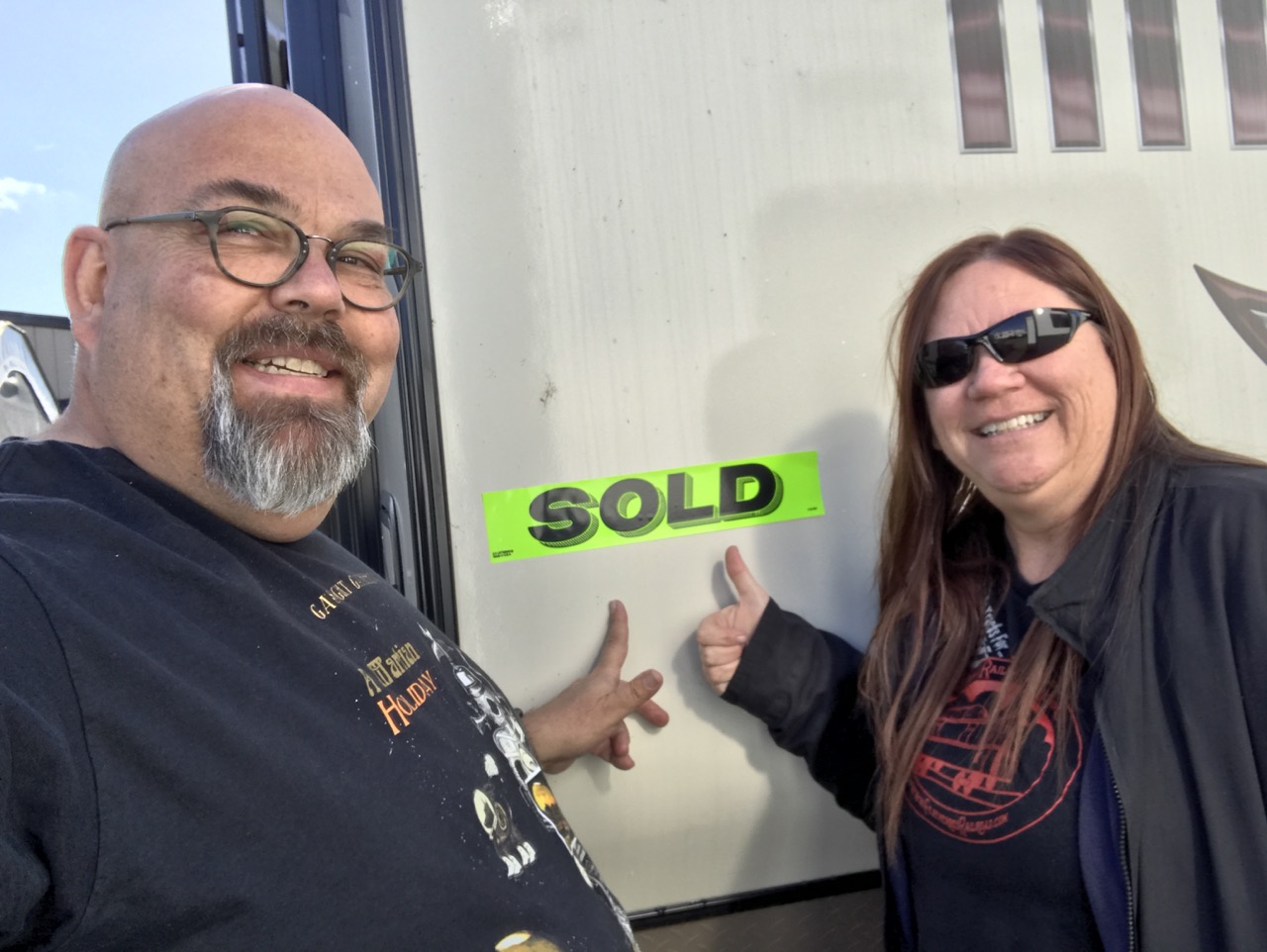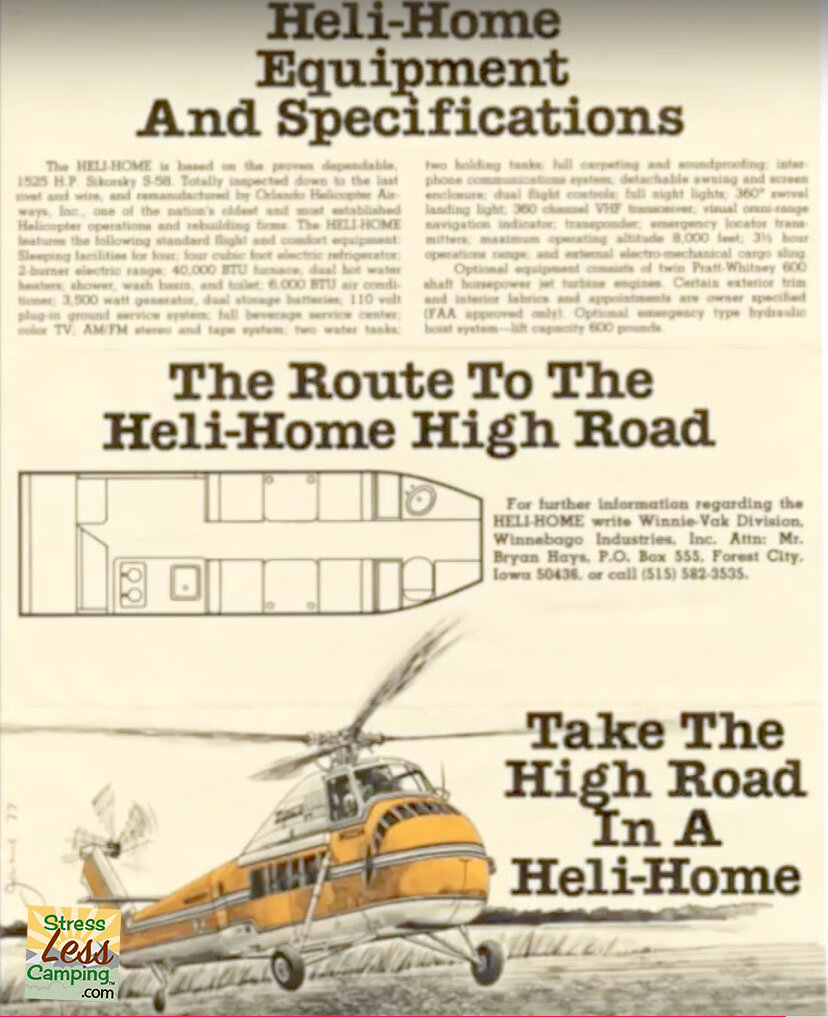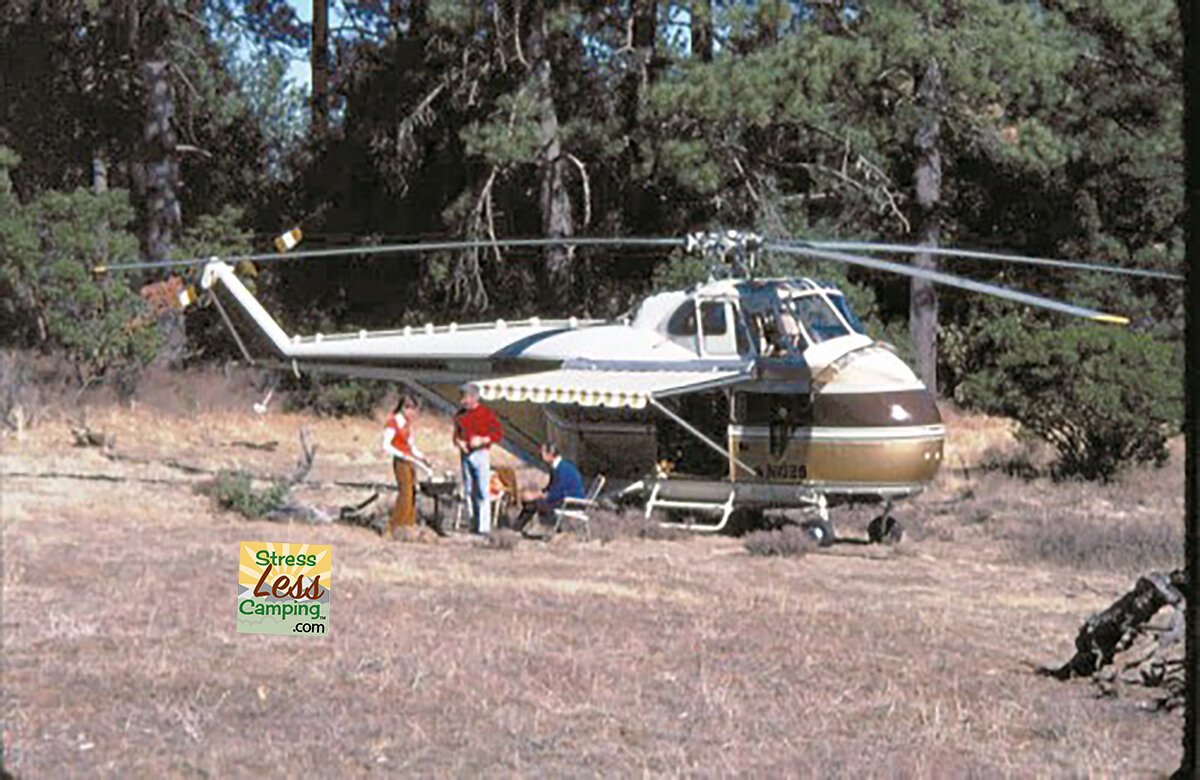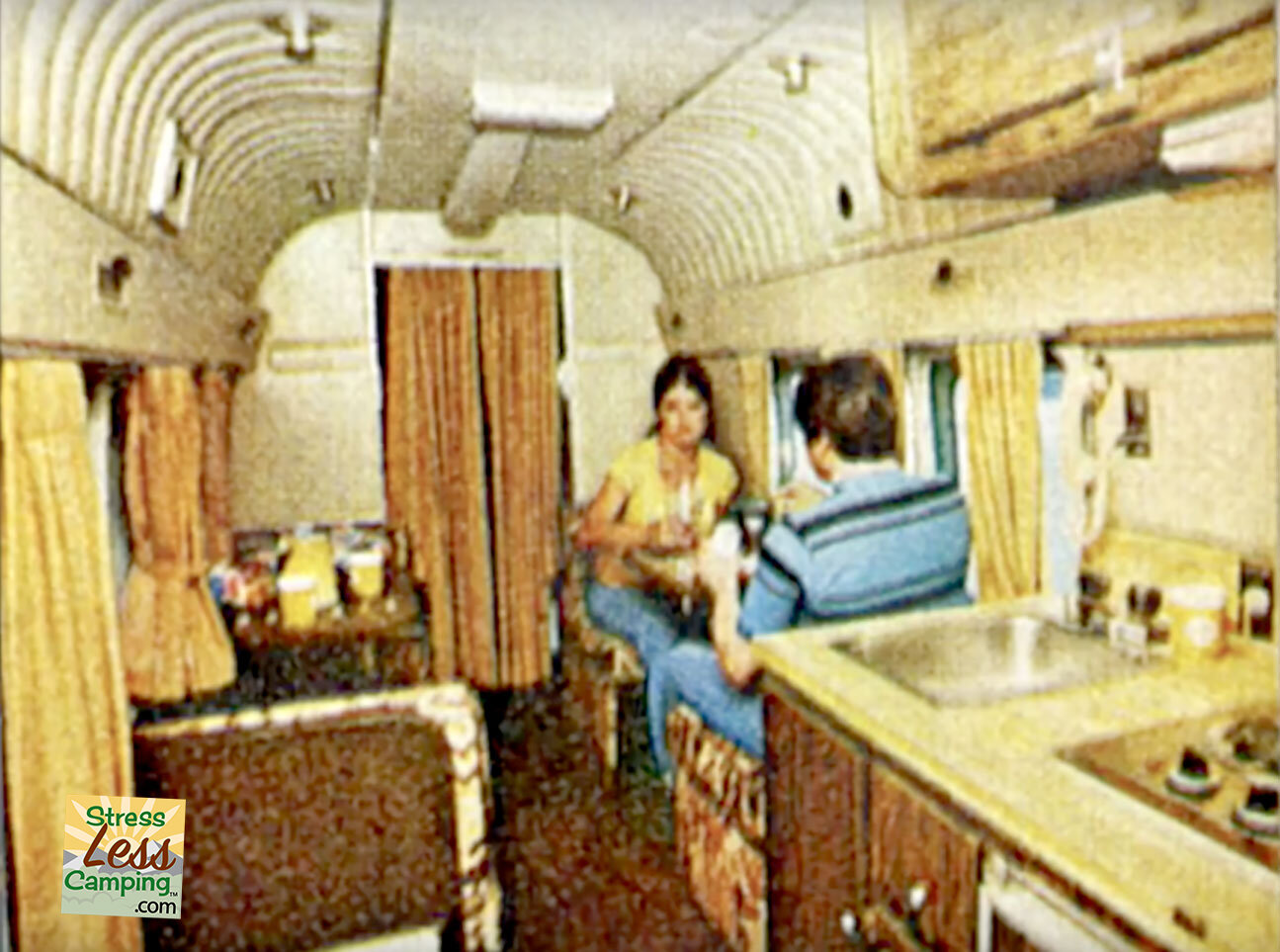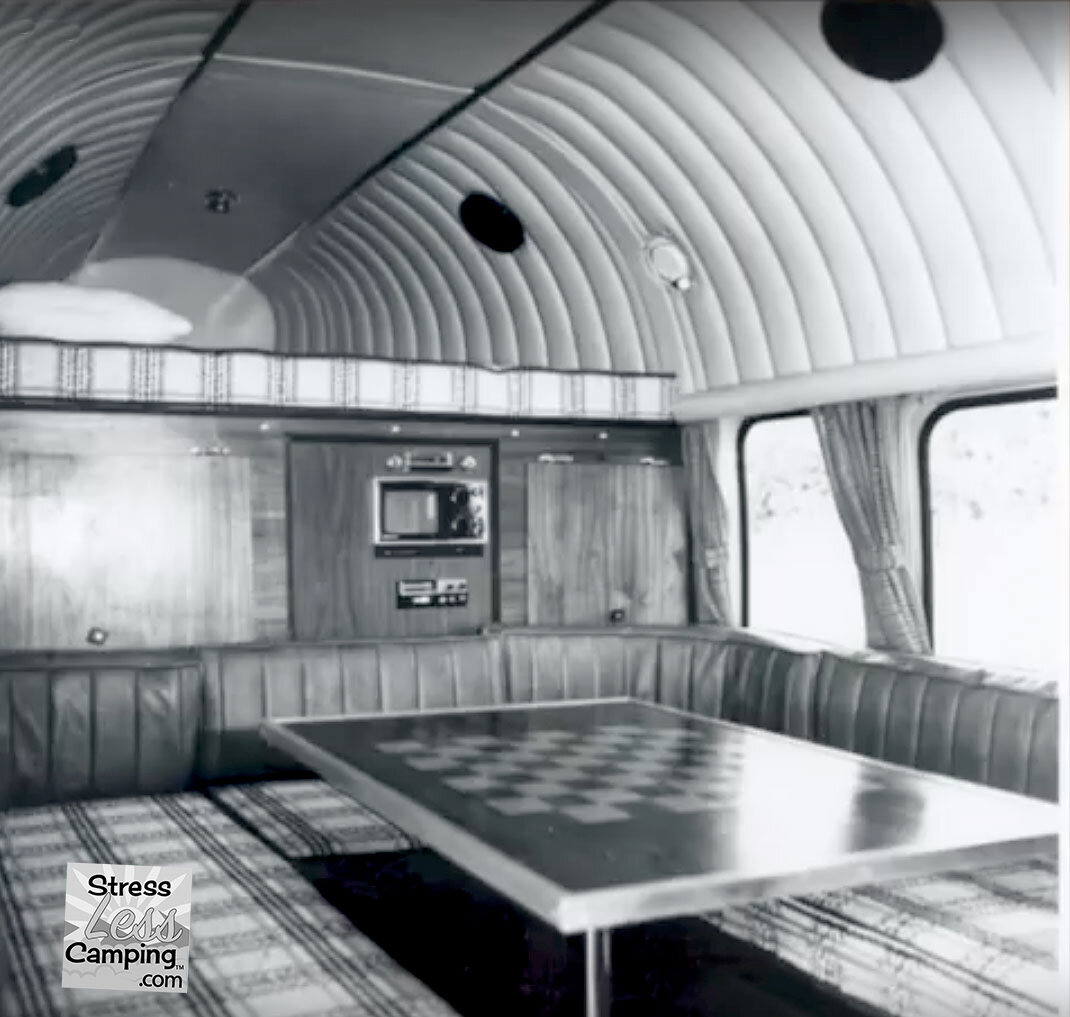The flying Winnebago - Winnebago Heli-Home
Winnebago Heli-Home - the helicopter RV
Winnebago has always been a leader in the RV world, being the first to introduce a truly affordable motorhome to the masses which sold like hotcakes. In addition to travel trailers and motorhomes, Winnebago also had a vision for a flying RV. And, thus, the flying Winnebago was born.
More precisely, Winnebago took several retired military Sikorsky helicopters and partnered with Orlando Helicopters Airways and created the Heli-Home under their Itasca brand. There were two different helicopter models and a variety of options including floats enabling the helicopter to land on water and a jet engine.
This helicopter was advertised as ‘the most dramatic, comfortable, convenient and unique RV in the world.’ But at prices from $185,000 to $300,000 it may have also been the most expensive RV in the world. Keep in mind that these are 1970s dollars so these units probably were the equivalent to close to a million of today’s dollars.
The Winnebago Heli-Home.
In addition to standard features like a stereo system, color TV, on-board communications system, a 3.5kW generator, water and holding tanks and even a 6,000BTW air conditioner you could get things like a screen room and awning and those optional floats so this RV could also land on water.
There was reportedly sleeping for six but no mention if these six people had to be really well acquainted and what does the pilot do if not a member of your camping posse.
The way the whole thing worked Orlando Helicopter bought up surplus Sirkorsky units and totally overhauled them. Then came Winnebago with the interiors and the Heli-Home was born. Since avionics weren’t as advanced in those days, only clear weather navigation was permitted. And, if you were rusty on your helicopter flying skills you could rent one of these for the tidy sum of $10,000 per week which included fuel and a pilot.
There was a hatch between cockpit and camping facilities in the Winnebago Heli-Home.
In one story it was noted that the pilot of one of the Heli-Home units hovered down to a level where he could read the normal street signs to make sure they were on the right path. Imagine all the drivers of Pacers, Vegas and Pintos freaking out as a giant helicopter eased on down to the highway.
You could easily argue that the Heli-Home wasn’t much of a sales success; however, it was more of a branding or publicity unit. While only six of these were ever built, they were a huge hit at RV shows and the publicity in magazines (the Instagram of the 1970s) was worth its weight in gold. It made the pages of Time, Popular Mechanics and Popular Science which is better than what any influencer will get you in today’s world. There were also TV appearances.
You know TV - it’s the YouTube of the 1970s.
When these were on display at RV shows you would naturally walk through a display of Winnebago campers you actually could afford and the message was clear: Winnebago’s got something for every camper.
Those who worry about the range of today’s EVs should know that the flight range on these was about 3 1/2 hours but they could travel at 100-110 miles per hour. After the three hours were up, it was time to fill 120 gallons of gasoline and continue your journey. Yes, that’s 300 miles or so on 120 gallons of gas. Unless you ordered yours with the optional jet engine.
Unfortunately none of these survive today in complete form, although one of the Sikorsky helicopters is on display in military regalia. While this interesting concept certainly did its job in getting Winnebago much needed publicity after the 1973 Arab Oil Embargo, they have all ultimately gone to history.
Imagine how cool it would be to fly in to an FMCA rally in one of these Heli-Homes as the FMCA even then recognized this as a legitimate candidate for membership since the driver (pilot) and cockpit area were directly connected.
And Winnebago’s logo at that time was the flying “W” on the side of their RVs but this really made that logo take flight.
